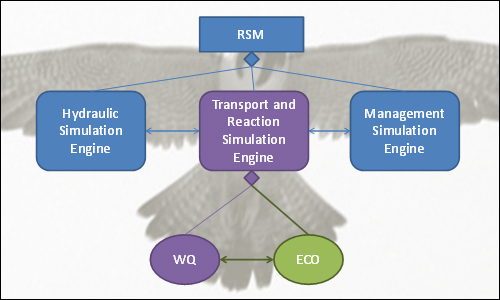Modeling Vegetation Dynamics in the Everglades
Participants: Gareth Lagerwall, Gregory A. Kiker[596KB], Rafael Muñoz-Carpena, Andrew James, Naiming Wang, Kirk Hatfield
Timeline: May 2006 – August 2010
Project Summary
The focus of The Comprehensive Everglades Restoration Plan (CERP) is slowly shifting from "getting the water right", towards maintaining and improving the ecology that is impacted by the water. To this end an integrated, spatially explicit, ecological model would serve to predict the impact of various management decisions on the environment.
Typha domingensis (Cattail) is known as an invasive, as well as an indicator, species. As such it was decided to model the dynamics of this sedge within the Water Conservation Area 2a (WCA2A), which is fairly representative of the everglades proper. The Transport and Reaction Simulation Engine (TARSE) was originally developed as a water-quality module to be incorporated within the Regional Simulation Model (RSM) - which can model the flow of water throughout South Florida. The TARSE code was used, and extended to incorporate ecological components (TARSE:ECO).
Cattails will be deterministically modeled with four increasing levels of complexity, with the idea that each successive level will better approximate the raw data provided. Having user-definable inputs and interactions, it is expected that TARSE:ECO will adequately simulate any ecological species (within the confines of the grid size) with as much or as little detail as desired.

Resource Links
- The Comprehensive Everglades Restoration Plan (CERP)
- Regional Simulation Model - South Florida Water Management District
- Regional Simulation Model - Water Quality - South Florida Water Management District
- South Florida Water Management District (SFWMD)
This page was last updated on July 13, 2019.